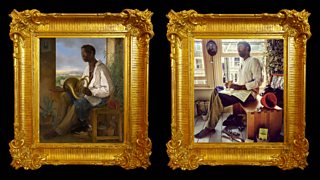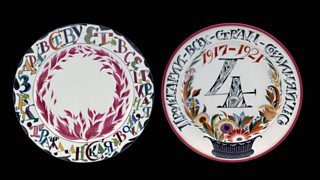Death in Trieste
One thing in life is certain: death. In Death in Trieste, Radio 3’s The Essay investigates the uncertain circumstances of a historically significant and criminal case. A hotel murder, in Trieste, back in 1768.
This is true crime, Radio 3-style. It’s no conventional whodunnit. They got the right man. Death in Trieste is a bedtime murder mystery with a twist: one historic homicide has become a cultural myth. It is a story with so very many tellings – often highly personal ones.
Seán Williams tells the story.
In this story, both the victim and the perpetrator were guests at the Osteria Grande – the finest establishment in town. They’d gone out for coffee, strolled deep in conversation, and dined together of an evening (even in each other’s rooms). The hotel manager called them the closest of friends: amicissimi.
News spread fast, throughout Europe. Not least because it turned out that the deceased was a celebrity. Johann Winckelmann was a renowned classicist, archaeologist, and art historian in the Age of Enlightenment. His killer, Francesco Arcangeli, was a nobody – becoming a somebody only thanks to his brutal deed.
But the murder also became a myth for another reason. It’s mostly been interpreted as a gay classic: a tragedy of the closet.
Radio 3: The Essay
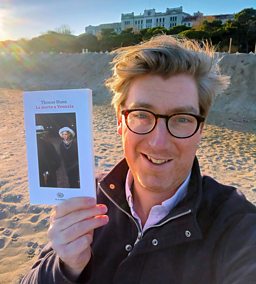
Seán Williams unpacks the mysteries and realities of a murder in Trieste in the 1760s. Listen now.
Then, one Wednesday between nine and ten in the morning, there lay a German gentleman in his 50s in a pool of blood, dying. What seemed like half of Trieste huddled around the poor man. He struggled to breathe for over six hours before he passed away. His thirty-something “friend” also gasped for breath, but he was now on the run: having stabbed and strangled his fellow guest in the neighbouring room, in what was said to be attempted robbery. And what was later found to have been premeditated murder.
We know all this because we have the trial records. Preserved in the archives of Biblioteca Civica in Trieste, they’re an odd mix of formal Latin, historical Italian dialects, and some German spelling for local colour. Trieste is a city of borders. And their transgression. Despite official details, the facts that have been drawn up aren’t as certain as they seem. Legal records and popular reasons aren’t always reliable. We have to read between the lines. And open our minds to ambiguity.
Homicide and homosexuality

At the dawn of modernity, Italy was a place where it was more possible for men to express their desire for men out of the shadows – though not exactly under the spotlight. There were many kinds of such sexual intimacy towards men and boys, for which there are various names. As an openly gay man, learning about some of these practices made me profoundly uncomfortable. Others, like consensual sex between adults, are just ordinary examples of homosexuality. The figure of “Winckelmann” – or rather, the mass of ways in which he’s been understood over time – is mixed up in almost all sorts of sexuality. “Noble”, as many called it. Or otherwise.
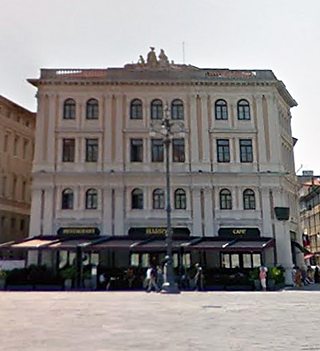
Burned alive at the stake?
A false friend of all Winckelmann biographies – and there are many – is the line that had Arcangeli admitted to sexual activity between men, he would have been burned alive at the stake instead of being broken by the wheel. According to the letter of the law, that’s true. But within the Holy Roman Empire, which was the legal model for Trieste, there were no executions for “sodomy” after 1729. In the Papal States, it was a similar story: in Modena, say, a weaver was the last so-called sodomite to be executed – in 1726.
In Prussia, where Winckelmann was born, sodomy laws were officially abolished two decades before his death. In Austria, they were repealed two decades after he was killed. In general, the law was no longer as harsh as it had been. Though homophobia could step into the space opened up by official, and some social, tolerance. Men whom we might now call “gay” were defrauded, falling victim to catfishing, and were mocked in print. Or worse. Closets and the public arena are rarely straightforwardly open or shut.
Authors of penny dreadfuls and almost pornography, as well as of thoughtful reflections on identity, all wondered whether Winckelmann’s homoerotic gaze not just looked, but also touched? Oscar Wilde, and the English socialist Edward Carpenter, took the art historian to heart, personally. Writers understood Winckelmann’s desire both as being of historic stature – and so useful for social legitimacy – and as having ended up dangerous. Often, that love dared not speak its name.
A poetic forgiveness?
But it was a sort of “open secret”. In 1897, the poet laureate Alfred Austin imagined Winckelmann forgiving his murderer Arcangeli on his deathbed. And apparently Winckelmann remained coy about himself until the very end:
“Oft have I confessed,
But never told the dark confessional
My sole transgression. Can you guess it, now?
[…]
I have loved
Chaste marble in cool corridors. If that
Be sin, it is my only one, and I
Can scarce repent of it. And now ’tis plain
I never shall commit that sin again.
If so there be another, even now
I cannot tell it you!”
Holiday reading
This Winckelmann myth has been told for playful and coquettish, soul-searching and emancipatory, or plainly homophobic purposes. And it’s been read, over the centuries, in situ – in Trieste itself.
While on holiday in 1908, Magnus Hirschfeld (as but one example) stopped to lay flowers at Winckelmann’s cenotaph, his empty grave. Hirschfeld established one of the world’s first organisations that campaigned against legal discrimination of men who have sex with men. He also wrote a petition to abolish Paragraph 175, the German law that meant sex between men was a crime in his – and Winckelmann’s – native country.
Among the signatories was Thomas Mann. His novella Death in Venice, which he wrote about his holiday, is indebted to the story of Winckelmann’s death. It is hardly a positive adaptation or good portrayal of homoeroticism. But when I was an undergraduate student of German, it was the only work of literature on the syllabus that discussed male-male desire. And so that book became especially important to me, even if I had conflicted feelings about it.
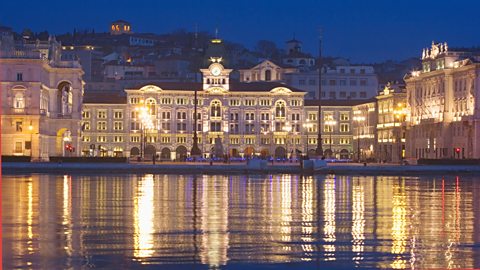
An appetite for murder
SeΓ΅n Williams sets the scene in the Grand Hotel Duchi d'Aosta, Trieste
Years later, I too wanted to follow in Winckelmann’s footsteps – to understand his life, death, and afterlives while on my travels. And against the changing historical landscape of men desiring men. I’m an academic of German culture, a lover of European literature, and a gay man. Last autumn, I was learning Italian and spent three months living in Italy. Based in Venice, I took trips to Trieste and Rome to research this series of The Essay.
While there, the current, far-right Italian government came to power. It’s no friend of LGBT+ rights. The imminent Rome Pride will surely be more politically charged than usual. But I’m reminded that the present can guide us through the past. The law, politics, and sections of society can all tell very different stories to each other. If reality is actually ambiguous, especially in the history of homosexuality, then often we seek to reduce that uncertainty and establish fixed meaning – in representation, through myth. For better or worse.

More features from The Essay
-
![]()
The Essay
Leading writers on arts, history, philosophy, science, religion and beyond, themed across a week.
-
![]()
Rediscovering black portraiture through history
Peter Brathwaite's amazing recreations of historical artworks featuring black characters.
-
![]()
The strange story of Russia's "propaganda plates"
How the Tsar's finest porcelain became a canvas for revolutionary slogans.
-
![]()
Coming up roses: the meaning of flowers
Seven charming facts about flowers... and romance.

